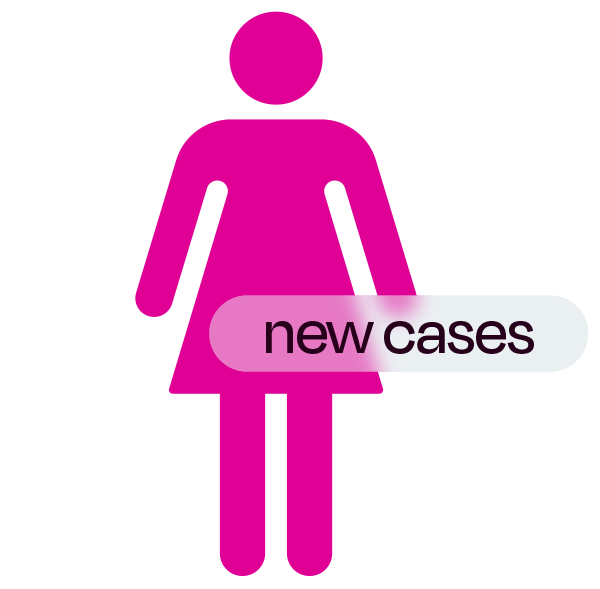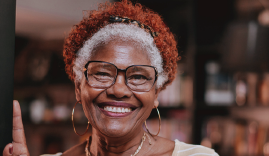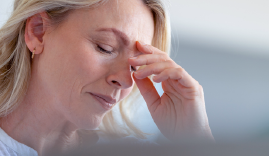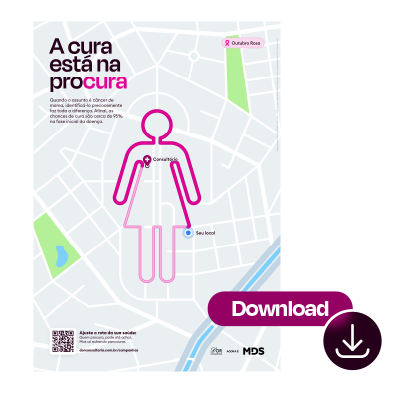
Statistics like these should be enough to encourage women to find out more about the disease and anticipate it. But that’s not what actually happens:
Do you know what the chances of a cure are if the disease is discovered at an early stage?
Pink October
Memory Game
Look without fear and in a didactic way
Click and play after read all the content in this page


If you think that self-exam is the best way to get ahead of breast cancer, recalculate the route!
According to the Brazilian Society of Mastology (SBM), self-exams stopped being recommended in more developed countries over ten years ago because they were unable to detect tumors up to 1 centimeter in size.
By performing self-exams and not identifying any changes, many women stop seeking medical care and neglect early detection tests.
However, self-exam should not be ruled out.
But it needs to be combined with a mammogram, as it cannot identify pre-malignant lesions, which are very small lesions, before they develop into cancer.

Is the path to getting a mammogram complicated?
Quite the opposite! It is a radiological exam that uses low radiation to produce detailed images of the internal structure of the breasts. Because compression is necessary, there may be some discomfort, but it is very quick. After all, the test lasts between 15 and 30 minutes and is usually only carried out once a year.
You have successfully reached your destination!
The medical specialty responsible for treating breast diseases, including breast cancer, is Mastology. This area studies, prevents, diagnoses and treats diseases, congenital and acquired alterations of the breasts or those related to them, in both women and men. Yes, men can develop the disease too!
When should I have
a mammogram?
No increased
risk factors
According to the Brazilian Society of Mastology, the Brazilian College of Radiology and the Brazilian Federation of Gynecology and Obstetrics Associations, the exam should be carried out annually from the age of 40. According to the INCA (National Cancer Institute) and the Ministry of Health, this screening should begin at age 50, every two years.
Increased risk
According to the SBM, mammograms are recommended starting at age 30 for high-risk women, meaning those with at least one first-degree relative (mother, sister, or daughter) diagnosed with cancer before the age of 50, or with a diagnosis of bilateral breast cancer For INCA and the Ministry of Health, the exam should be included from the age of 35.
What are the
risk factors?








Are there shortcuts to prevent breast cancer?

Unfortunately, it is not possible to prevent cancer. However, it is possible to reduce the chances of this happening by developing healthier habits.
Stick to a more balanced diet, avoiding ultra-processed options for example, and include regular physical activity in your routine.
Are there any shortcuts to identifying the symptoms of the disease?
An annual mammogram is the best way to screen for or detect breast cancer at an early stage, when it doesn’t even show symptoms. Some indications, however, require attention:
If you notice any of these symptoms, seek medical attention immediately.
Adjust the route of your health:




